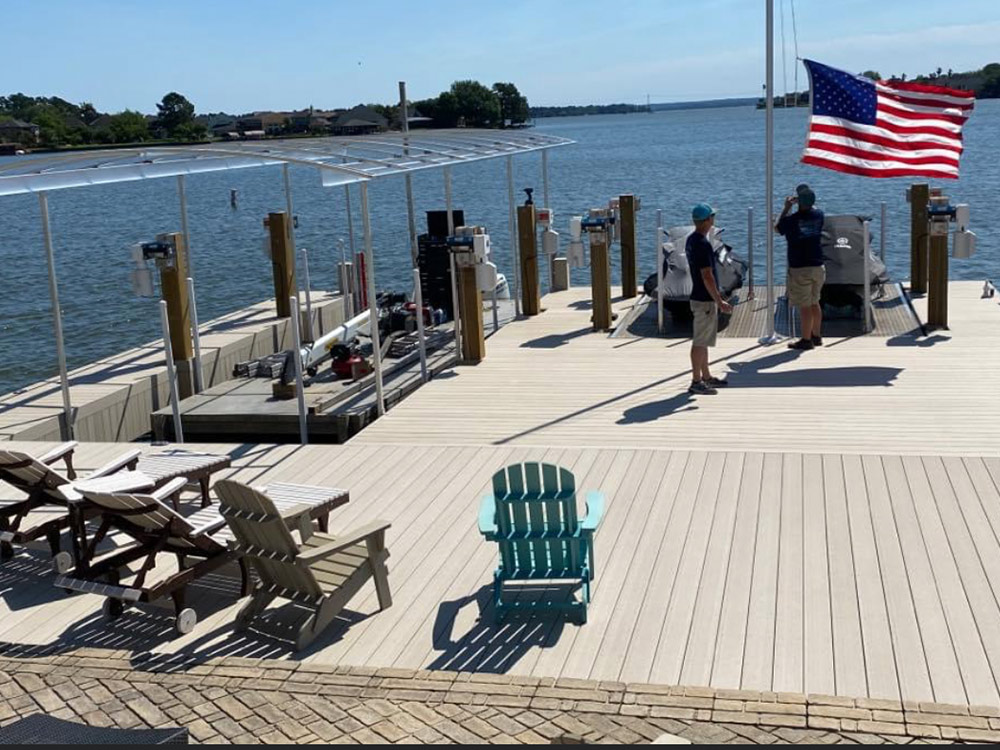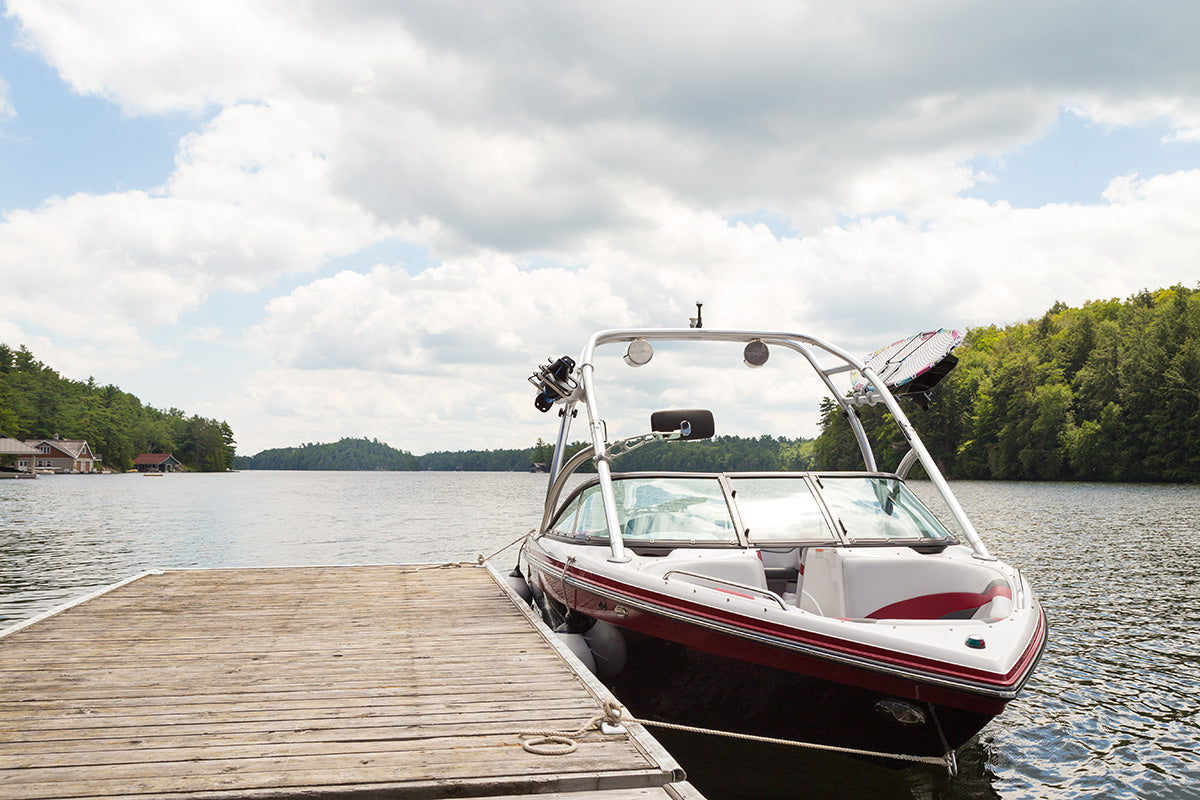Common Concerns That Bring About Pricey Dock Repairs
Wiki Article
Efficient Dock Repair Service Techniques: Ensuring Structural Integrity
Making certain the architectural integrity of docks through effective fixing strategies is extremely important for the long life and safety and security of aquatic facilities. This entails a multi-faceted approach starting with comprehensive inspections using advanced innovations like sonar devices and remotely operated lorries (ROVs) to discover both noticeable and concealed damages. Subsequently, selecting the appropriate repair products, such as composite materials and corrosion-resistant alloys, is crucial for resilience. Architectural support methods, consisting of the implementation of cross-bracing systems and load-distribution plates, play an essential duty in mitigating anxiety points. The importance of these methods ends up being noticeable when exploring sophisticated repair work methods and preventative upkeep methods.Analyzing Dock Damage
Evaluating dock damages is a vital first step in ensuring the structural stability and safety and security of any kind of docking center. Key facets to examine consist of the dock's foundation, pilings, outdoor decking, and hardware (Dock Repairs).Structural designers or certified examiners generally perform these evaluations utilizing specialized devices and strategies. As an example, undersea examinations might employ sonar devices or from another location operated lorries (ROVs) to identify submerged damage. Over water, visual inspections are matched by making use of wetness meters and other analysis devices to uncover underlying issues not instantly noticeable to the naked eye.

Choosing Repair Service Materials
Picking the suitable fixing products is an essential action in the dock repair process, one that straight affects the long life and efficiency of the repaired structure. Material choice have to be driven by elements such as ecological problems, load-bearing needs, and compatibility with existing dock parts. Timber is a typical choice for anchors due to its all-natural resilience and visual appeal. Choosing the appropriate kind of wood, such as pressure-treated lumber or naturally rot-resistant species like cedar or teak wood, is crucial to endure marine environments.Along with wood, composite materials are increasingly popular due to their durability and reduced upkeep requirements. Compounds, typically made from a mix of plastic and timber fibers, use excellent resistance to rot, insects, and UV damage. For steel docks, picking corrosion-resistant alloys such as galvanized steel or marine-grade light weight aluminum is important to protect against rust and ensure architectural stability in saline water conditions.
Epoxy materials and marine-grade sealers are important for fixing cracks and sealing joints, giving a waterproof obstacle and boosting the dock's total toughness. By meticulously picking high-quality products, dock repair services can attain durable results, thus guarding against future destruction and making certain secure, reputable use.
Architectural Reinforcement Methods
Effective structural reinforcement strategies are vital in making certain the security and durability of dock repairs. One essential technique involves using steel or composite reinforcement bars (rebar) within concrete structures. Rebar provides added tensile toughness, protecting against fractures and distributing tons much more evenly. This approach is especially effective for docks subjected to heavy loads or extreme environmental conditions.Another vital method is the application of fiber-reinforced polymers (FRP) These products supply high strength-to-weight ratios and outstanding resistance to corrosion, making them suitable for reinforcing wooden or concrete anchors. FRP can be used in sheets or strips and bonded with epoxy materials to enhance architectural honesty.
Bracing and anchoring systems also play a crucial duty in structural reinforcement. Cross-bracing, making use of steel or wooden beam of lights, can neutralize lateral pressures, decreasing swaying and activity. Securing systems, such as helical piers or driven piles, give a steady foundation by moving loads to deeper, more steady soil layers.
Lastly, the assimilation of load-distribution plates can help disperse weight much more uniformly across the dock's surface, minimizing localized stress and anxiety points. These strategies collectively make certain that docks continue to be robust and safe, with the ability of holding up against the rigors of their operational atmosphere.
Advanced Fixing Approaches

One more advanced method involves undersea welding, which enables repair work to be conducted without the demand to dewater the location. This method is specifically useful for addressing structural concerns in submerged dock elements, making certain very little interruption to procedures. Improved welding strategies, coupled with robotic systems, supply accuracy and integrity, consequently extending the life-span of the dock.
In addition, cathodic protection systems are executed to avoid rust in metallic dock structures. By utilizing sacrificial anodes or satisfied existing systems, these strategies effectively minimize the electrochemical processes that lead to product deterioration.
Lastly, advanced tracking technologies, such as architectural health and wellness monitoring (SHM) systems, supply real-time data on the condition of dock structures. These systems allow aggressive upkeep and prompt interventions, eventually making certain the long-term architectural integrity of the dock.
Maintenance and Avoidance
Upkeep and avoidance are fundamental ideas that underpin the best site durability and safety of dock frameworks. Regular assessments are critical, allowing for very early detection of deterioration, potential weaknesses, and environmental influences. An aggressive approach, entailing regular checks for deterioration, rot, and architectural shifts, mitigates pricey repair services and lengthens the dock's operational life.Preventive steps should consist of using protective finishings to steel parts to protect versus corrosion and making use of cured wood to stand up to degeneration. Additionally, guaranteeing proper water drainage and ventilation can prevent water build-up, which is an usual root cause of architectural deterioration. Including high quality products and sticking to supplier standards throughout construction and repair work stages likewise play vital functions in improving resilience.

Training workers in dock upkeep best methods makes certain regular application of safety nets. Leveraging technical breakthroughs, such as drones for examinations and sensors for real-time surveillance, can even more enhance maintenance initiatives. By focusing on maintenance and avoidance, dock owners can make sure architectural integrity, functional safety, and cost-efficient management over the dock's life-span.
Final Thought
In final thought, maintaining the structural honesty of aquatic facilities demands extensive dock repair work methods. Advanced repair service strategies, combined with normal maintenance methods, make sure the dock remains operational and secure under varied ecological problems.Ensuring the structural stability of docks via reliable repair methods is vital for the longevity and safety of aquatic centers.Picking the proper fixing materials is an essential action in the dock restoration process, one that straight influences the durability and efficiency click for more of the fixed framework.Efficient structural support strategies are critical in ensuring the security and longevity of dock repair services. By prioritizing maintenance and avoidance, dock proprietors can make sure structural honesty, operational security, and economical monitoring over the dock's life-span.
In final thought, preserving the structural stability of aquatic centers requires thorough dock repair service methods.
Report this wiki page